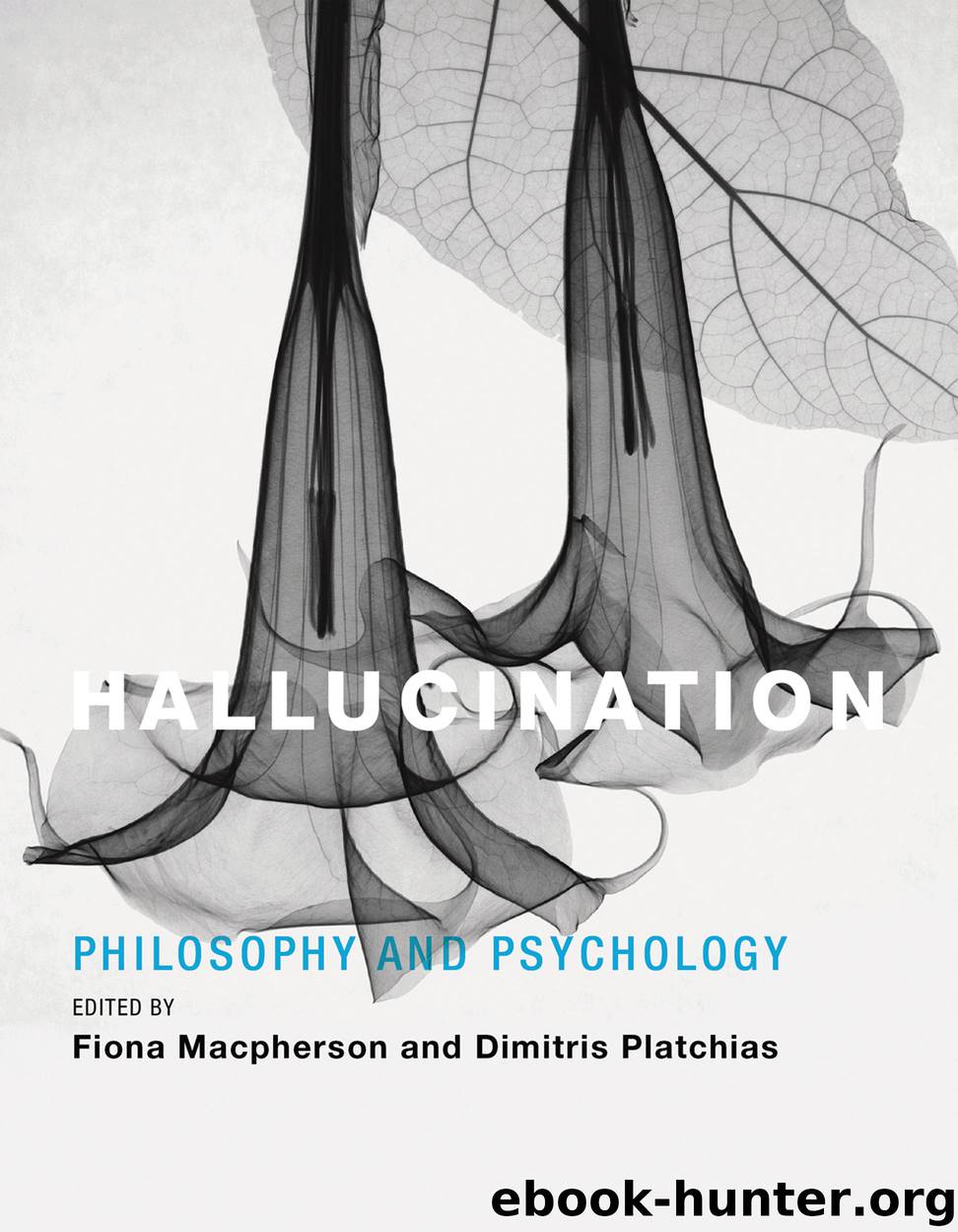Hallucination by Philosophy & Psychology

Author:Philosophy & Psychology
Language: eng
Format: epub
ISBN: 9780262019200
Publisher: The MIT Press
Published: 2013-08-28T16:00:00+00:00
1. Schellenberg (2010) also puts forward a mixed position. But her conception of the intentional element of perception is different from the one suggested here. While she promotes a Fregean picture, my proposal is more Husserlian in spirit.
2. I use the term “perceptions” exclusively to denote veridical perceptual experiences. The expression “perceptual experiences” is intended to cover both perceptions and perception-like (or “perfect”) hallucinations—but not hallucinations that are, from the inside, discriminable from perceptions. The class of “experiences,” finally, is meant to include not only perceptual experiences but also other sensory episodes, such as episodic memories, imaginings, and subjectively discriminable hallucinations.
3. This strengthening of the epistemic conception of perception-like hallucinations has been defended in Martin (2004, 2006) and Fish (2009) and criticized in Sturgeon (2000) and Siegel (2008), among others.
4. Just like other proponents of the epistemic conception, I do not have much to say in this chapter about hallucinations that are subjectively discriminable from perceptions. I address the issue of what they have in common with perception-like hallucinations in Dorsch (2010c).
5. There is one notable difference between the two readings. If we cannot discriminate the character of a given experience first-personally, we cannot discriminate it at all. Even reductionist physicalism has to assume that our canonical access to what is to be reduced is first-personal. Otherwise it would be impossible to decide which brain states are to be identified with pain, say, and which with pleasure. So if the character of a given hallucination is distinct from that of perceptions but cannot subjectively be known to be distinct from perceptions, we cannot say anything positive about it at all. By contrast, the structure of experiences is open to third-personal investigation. Indeed, identifying the subjectively accessible aspects of the structure may be impossible without relying on such a third-personal access (cf., for instance, the external determination of content). Hence, even if we cannot tell from the inside that a given hallucination differs structurally from perceptions, the sciences or metaphysics can still reveal their structure (Dorsch, 2010c).
6. See the writings of Martin, especially Martin (2004, 2006). In §§13–14 and 22, I characterize in more detail both this version of disjunctivism—which is sometimes also called “naive realist disjunctivism” (see Martin, 2002; and Nudds, this volume) or “phenomenal disjunctivism” (Macpherson & Haddock, 2008)—and its understanding of subjective indiscriminability in terms of introspection. The term “disjunctivism” and its counterpart “conjunctivism” are, if taken literally, perhaps not particularly apt, but I follow the tradition in using them for the positions at issue.
7. Martin (2004, 2006) and Nudds (2010) are notable exceptions, though they limit their discussion to introspection.
8. The following considerations draw heavily on Williamson (1990) and, to some extent, also on Martin (2006).
9. This should be obvious for cases in which both entities are accessible to us at the same time and in the same way (e.g., when we can simultaneously see them). In other cases, however, it is less clear whether indiscriminability is symmetric (e.g., when we see one entity while merely remembering the visual appearance of the other).
Download
This site does not store any files on its server. We only index and link to content provided by other sites. Please contact the content providers to delete copyright contents if any and email us, we'll remove relevant links or contents immediately.
The Art of Thinking Clearly by Rolf Dobelli(10305)
Mindhunter: Inside the FBI's Elite Serial Crime Unit by John E. Douglas & Mark Olshaker(9257)
Change Your Questions, Change Your Life by Marilee Adams(7673)
Nudge - Improving Decisions about Health, Wealth, and Happiness by Thaler Sunstein(7652)
Mastermind: How to Think Like Sherlock Holmes by Maria Konnikova(7272)
The Power of Now: A Guide to Spiritual Enlightenment by Eckhart Tolle(5671)
Men In Love by Nancy Friday(5189)
Altered Sensations by David Pantalony(5069)
Factfulness: Ten Reasons We're Wrong About the World – and Why Things Are Better Than You Think by Hans Rosling(4710)
The Confidence Code by Katty Kay(4212)
Thinking in Bets by Annie Duke(4179)
Man and His Symbols by Carl Gustav Jung(4091)
The Worm at the Core by Sheldon Solomon(3448)
Why Buddhism is True by Robert Wright(3418)
Liar's Poker by Michael Lewis(3406)
Three Women by Lisa Taddeo(3386)
The Inner Life of Animals by Peter Wohlleben(3281)
Descartes' Error by Antonio Damasio(3247)
How Music Works by David Byrne(3228)
